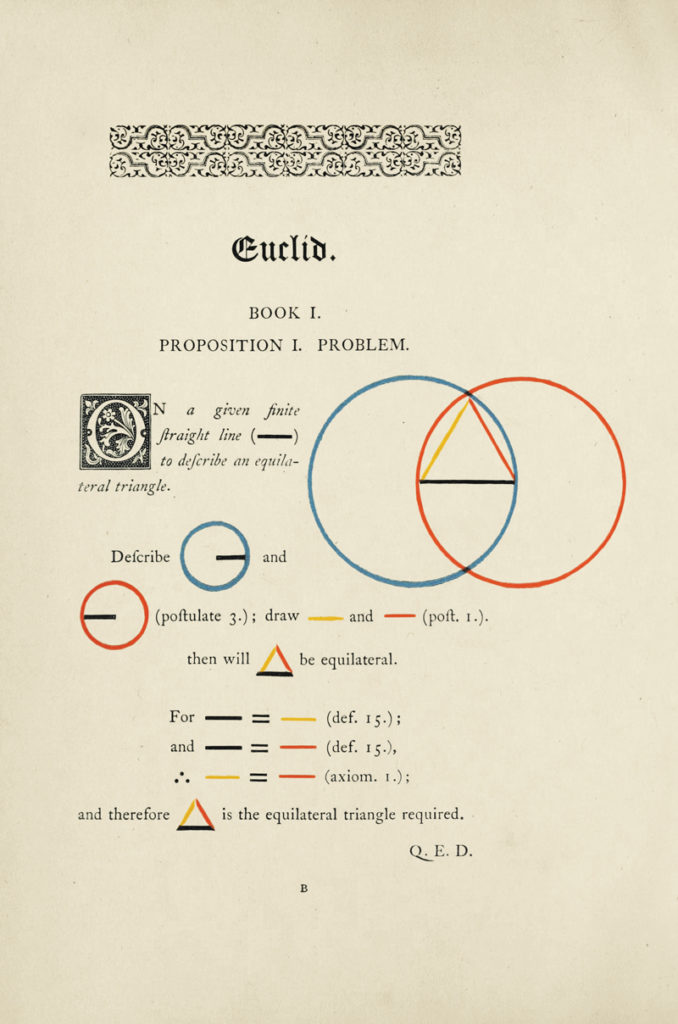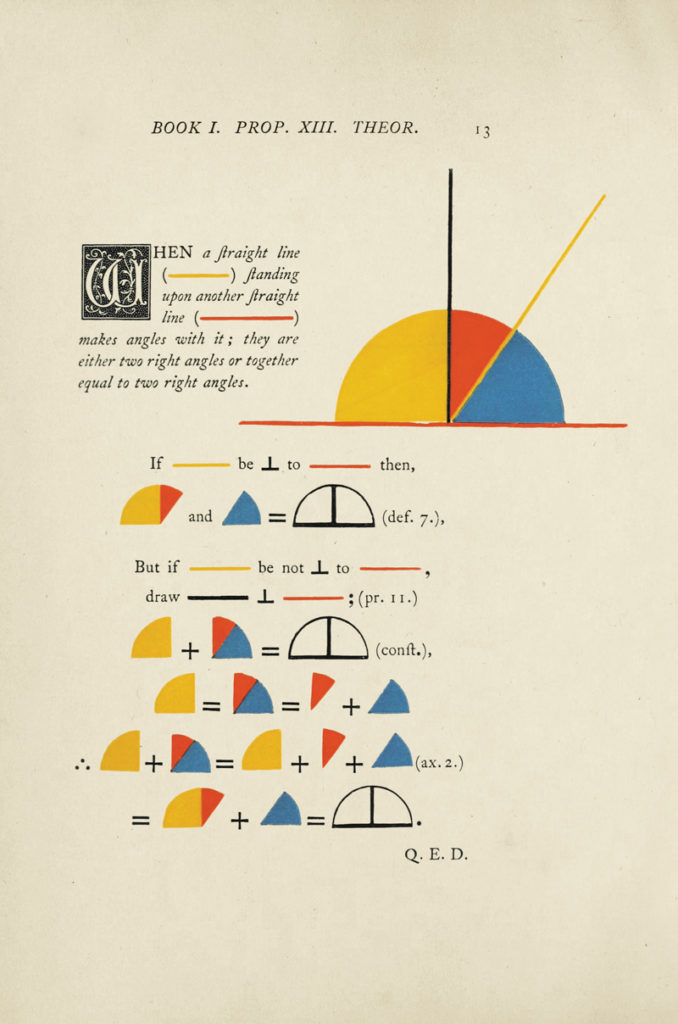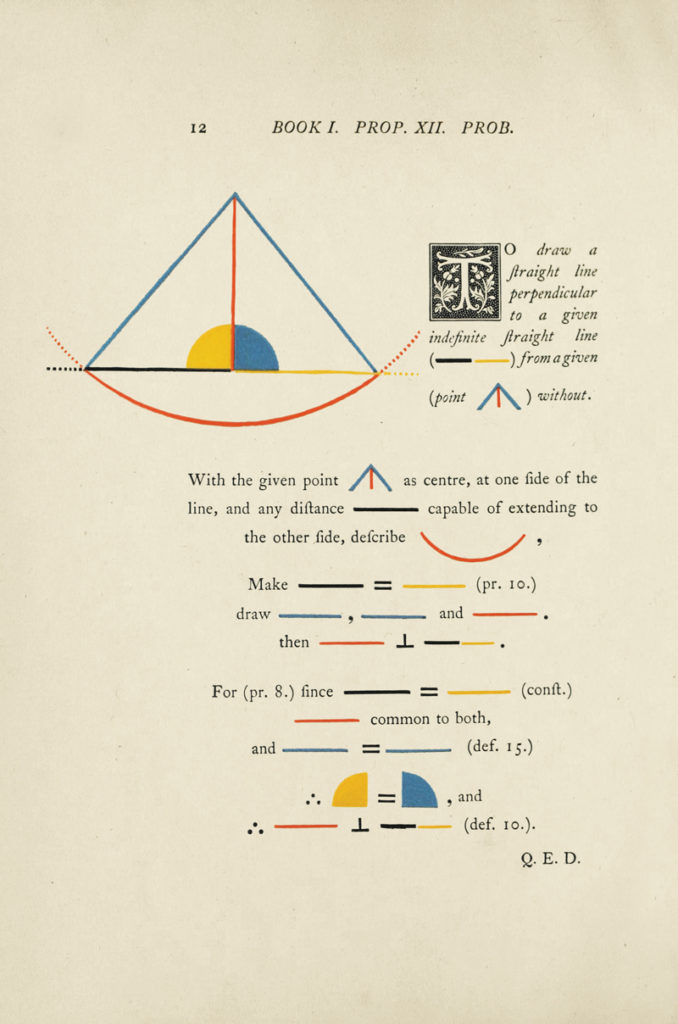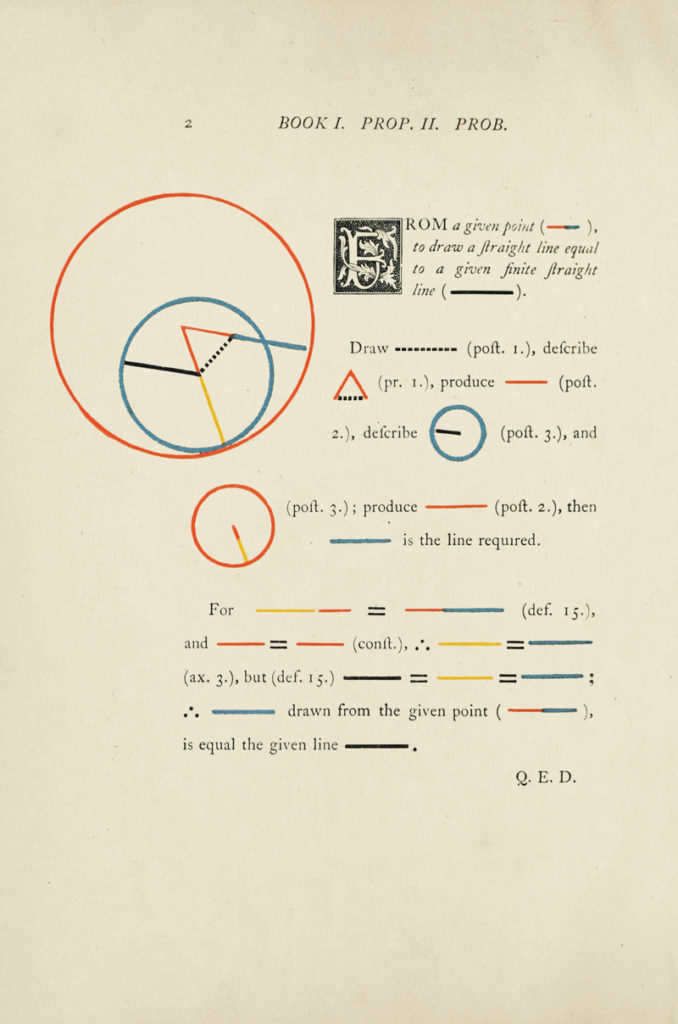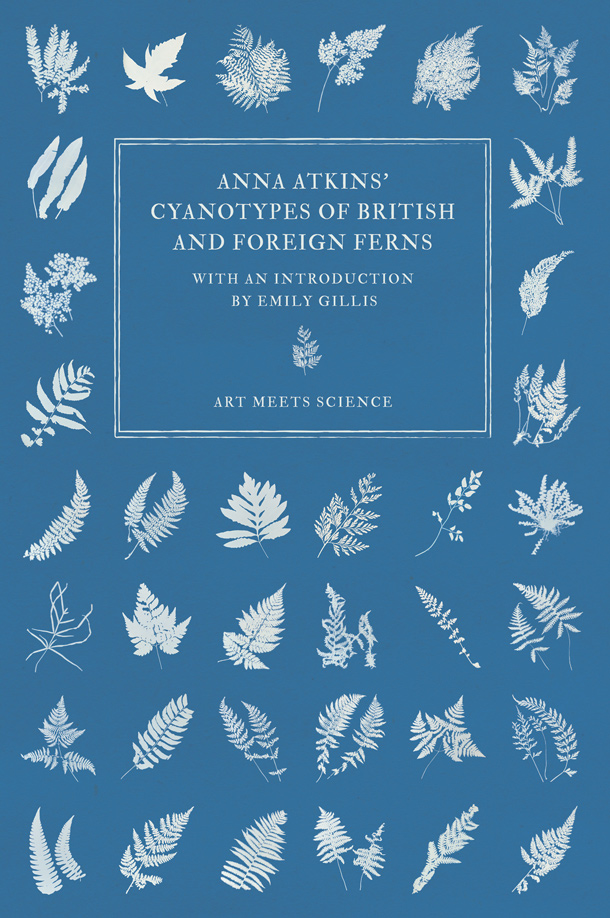Despite being printed over a century ago, Oliver Byrne’s stunning edition of Euclid’s Elements continues to be one of the most beautiful expositions in the world of mathematical publishing.
Scattered across each page in brilliant reds, yellows and blues are triangles, squares and circles in a myriad of combinations with intersecting lines and numbers.
These intricate figures express the mathematical proofs of many iconic geometric equations that form the bedrock of mathematical study. Explore this extraordinary volume by Oliver Byrne as we take a look at its beautiful pages.
The First Six Books with Coloured Diagrams and Symbols
Art Meets Science Collection
The History of Euclid's Elements
First published in 1847 Oliver Byrne’s Elements of Euclid was the first attempt to illustrate the classic books of mathematical theorems written by ancient Greek mathematician Euclid of Alexandria, originally penned around 300BC.
Euclid’s original treatise on geometry and mathematical theory laid the foundation for the modern study of geometry and have since become cornerstone works in the history of mathematics.
They have proved influential in the sciences, used by Galileo Galilei, Albert Einstein, and Sir Isaac Newton, who implemented the theories within Elements to aid their discoveries. The thirteen books of Euclid’s Elements continue to be considered a masterpiece in the practice and application of mathematics.
While the artfully compact diagrams within this volume can be appreciated as artworks in their own right, Byrne’s intention surpassed the visual, aiming to aid the mind in attaining such complex mathematical knowledge.
The visual, educational elements in Byrne’s Euclid encouraged learning by physical example, provided in the colourful compounds formed of shapes, angles, and edges. This stunning example of numerical visual study has influenced the history of mathematics the world over; however, it has also proven to be an indispensable inspiration for twentieth-century art movements. With avant-garde groups like De Stijl and The Bauhaus using Byrne’s iconic colour, line work and form in many of their works.
Byrne’s Euclid was his most ingenious educational work. By accompanying Euclid’s original geometric theories with expressive, colourful proofs, Byrne turned what was already a cornerstone academic text into a pedagogical work of art.
Working as an aid to understanding Euclid’s complex equations, Byrne’s fascinating and carefully considered graphics added an appealing visual element for many who struggle to make sense of complex mathematics with numbers alone.
The compelling explanations in vibrant red, yellow, and blue float across the book’s pages, bringing the ancient theorems to life, in an attempt as he expressed: ‘to teach people how to think, and not what to think.’ Each wash of colour, shape, form, angle, and line were carefully contemplated to create visually stunning and easily conceivable graphics.
While Euclid’s original theorems stand alone as the foundation of modern mathematics and continue to be used as a practical mathematical guide, it is through Byrne’s enchanting illustrations that this work continues to intrigue readers centuries on.
Read more about Oliver Byrne’s geometric masterpiece on the Art Meets Science Journal.
The First Six Books with Coloured Diagrams and Symbols
Art Meets Science Collection



